Overview
The Arctic fox looks like someone took a Pomeranian and said, “Let’s cross it with a wolf and make it extra fluffy — to up the cuteness factor and make it impervious to extremely cold temperatures.”
If they didn’t live in the far northern environments that are practically uninhabitable by humans, we’re pretty sure they’d have been domesticated long ago for their amplified snuggle-ability.
That said, they are wild animals with extremely cool adaptations that wouldn’t do in a domestic setting, so we’ll have to admire their floof from a safe distance.
About the Arctic Fox
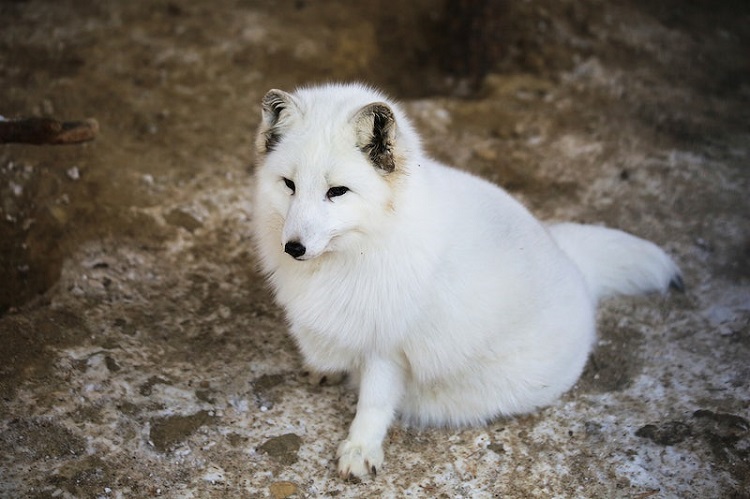
The Arctic fox, with the Latin name Vulpes lagopus, is also known as the white fox, polar fox, or snow fox. They are native to the Arctic regions (hence the name) of the Northern Hemisphere, particularly throughout the tundra biome.
They are opportunistic predators — known for eating just about anything –but prefer to eat lemmings, voles, birds, and bird eggs.
The Arctic fox was prized in the early 20th century for having an extraordinarily warm pelt, but people realized that they were going to hunt them into extinction, and protections were relatively quickly put in place.
Thankfully, those protections have helped the Arctic fox develop a relatively stable worldwide population, so we can enjoy their cute antics for years to come.
History of the Arctic Fox
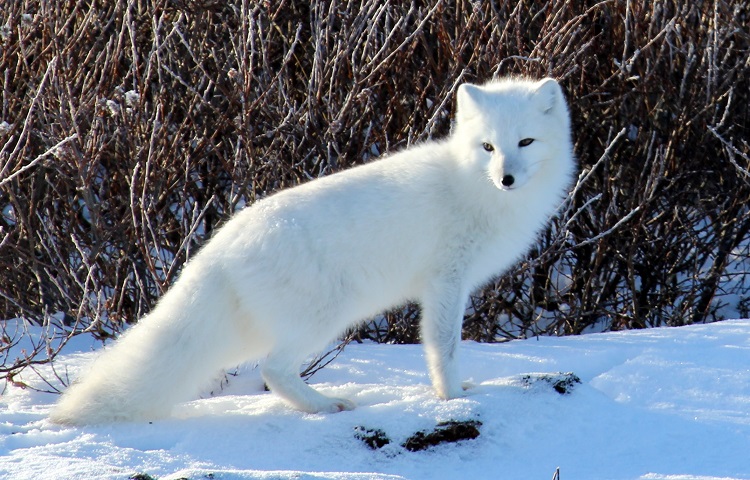
Carolus Linnaeus, a famous Swedish naturalist, first described an Arctic fox in his book Systema Naturae in 1758. The name Vulpes lagopus means “hair on feet,” as a nod to their uniquely furred paw pads.
Historically, the Arctic fox was an abundant species, with breeding populations in Fennoscandia reaching at least 15,000 individuals in lemming peak years during the mid-19th century.
However, fox numbers suffered a drastic decline due to over-harvesting by the fur industry at the beginning of the 20th century. From the 1920s to the mid-1970s, the fur of the Arctic fox was characterized as the most important asset traded by the Inuit in Canada to secure cash and other valuable merchandise.
Behavior of an Arctic Fox
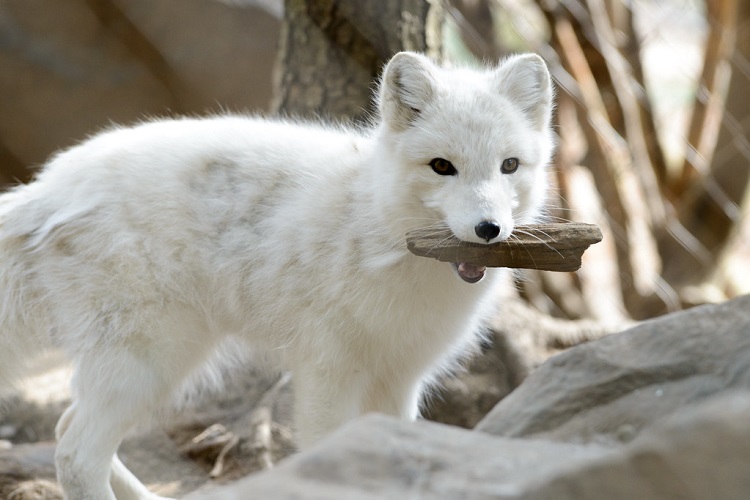
Arctic foxes are burrow dwellers; they stay warm by escaping the brutal winds and curling up in their dens, which are built in frost-free, slightly raised ground. When they can’t get cozy at home, they curl their bodies into a tight ball with their legs and head behind the furry tail for warmth.
Depending on the season, they may be active at any time of day (unlike many of their kin, which tends to be nocturnal.) They don’t hibernate but will slow down a bit to preserve fat and calories.
Like many animals that inhabit the tundra, it is an opportunistic eater: it will feed on whatever animal or vegetable material is available. In fact, they are known to follow a polar bear, wolf, or wolverine to scavenge the remains of their kills.
Taxonomic Hierarchy of Arctic Fox
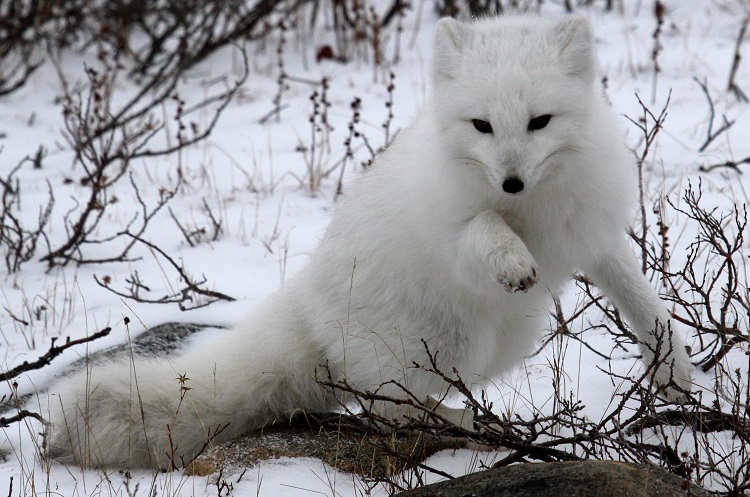
It is theorized that Vulpes lagopus are descendants of Vulpes qiuzhudingi, an extinct ancestral fox that existed on the Tibetan Plateau in the early Pliocene era. The Pliocene was characterized by tundra-like conditions, much like the ones modern Arctic foxes prefer today.
There are several subspecies of Vulpes lagopus: V.I. beringensis, which lives on the Bering Islands (remember: scientists aren’t known for their overly creative taxonomic naming skills); V.I. foragoapusis, or the Greenland Arctic fox; V.I. fuliginosus, the Iceland Arctic fox, and V.I. pribilofensis, the Pribilof Islands Arctic fox.
Physiology of Arctic Fox
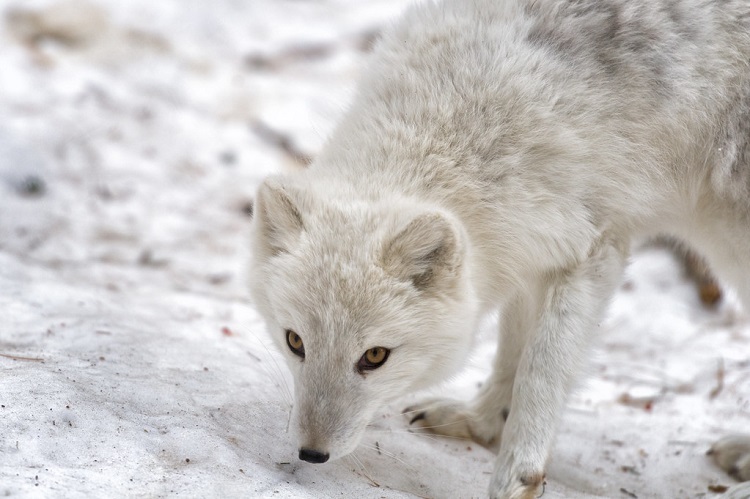
The Arctic fox comes in two colors: white “morph” and blue “morph.” The white morphs tend to live inland, where there is more snow cover, and their pristine coats help them blend in with their surroundings.
In the summer (around July), when the snows have melted, their coasts turn into a mottled brown to blend with the tundra grasses.
The blue morph, disappointingly, is more brownish-gray year-round than blue. (What we wouldn’t give for a bright dark blue fox!) These” blue” foxes live in coastal areas along rocky shores and cliffsides, where their coat blends in better.
The physiology of the Arctic fox makes them a species uniquely able to survive in extreme temperatures.
Their extra-fluffy fur- even on the bottoms of their feet- helps keep them warm in the coldest winter. They are also adorably round, which helps minimize the amount of their body getting exposed to the harsh climate.
In addition to their adaptations for the cold, they utilize their noses for evaporative cooling in warmer weather to prevent the brain from overheating, similar to dogs. This is important because even their summer fur is remarkably thick.
Arctic Fox Growth and Reproduction
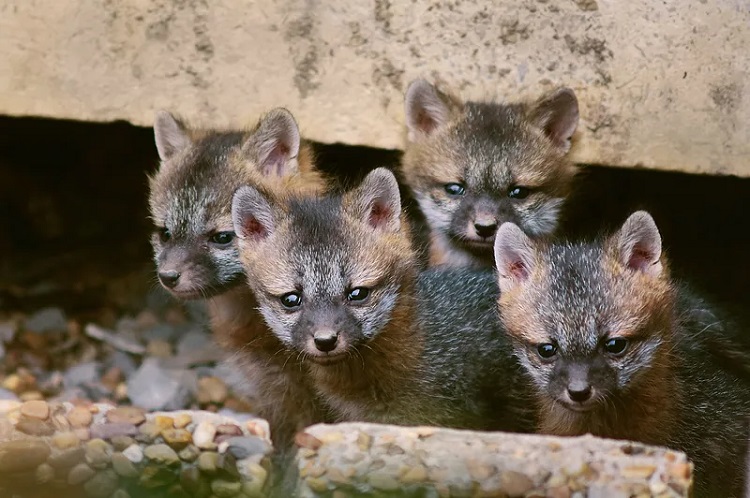
The Arctic fox usually breeds once yearly, producing a litter of up to 20 dark-furred pups born between April and June. The size of the litter is primarily impacted by the scarcity or availability of food; when food sources are abundant, the litters are bigger.
Pups are weaned when they are about 45 days old and leave the den to live on their own in the early fall of the same year. Unfortunately, the survival rate of juvenile Arctic foxes is low: only approximately 10% make it to maturity in the wild in years when prey sources are low.
They become sexually mature at 9-10 months of age and are mostly monogamous when they mate.
(When other animals are abundant in the area, Arctic foxes will sometimes engage in a promiscuous activity because larger packs can guard a single territory more efficiently to increase pup survival.) Both parents care for their offspring as well.
Diet and Nutrition of Arctic Foxes
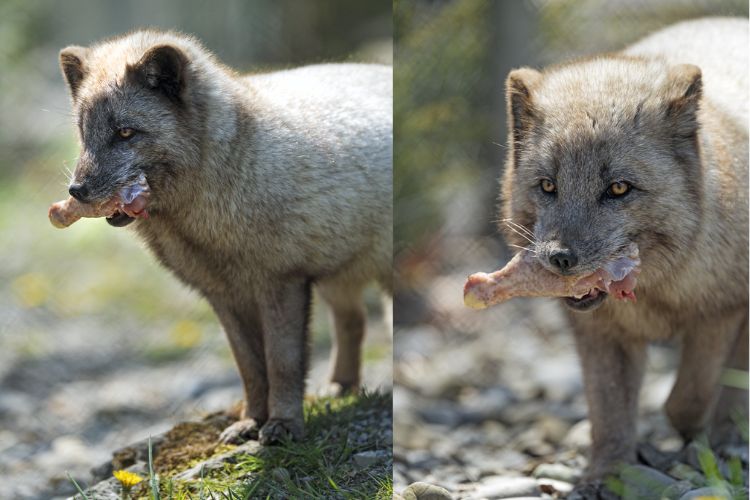
Arctic foxes will generally eat any small animal or vegetation they can find. It ain’t easy surviving in the tundra, so they can’t really be picky eaters.
Their primary food sources include eggs, fish, carrion, lemmings, voles, other rodents, hares, insects, and birds. They also like to scavenge on carcasses left by larger predators like wolves and polar bears. And, when they get really desperate, an Arctic fox will even eat their feces.
In areas where they exist, lemmings are their favorite food, with foxes guzzling them down by the dozen. In most other places, the Arctic fox eats a lot of birds and bird eggs.
During the Spring season, the Arctic fox is known to hunt ringed seal pups while they are young and helplessly confined to a snow den.
They also eat wild berries and seaweed, especially when they’re trying to bulk up for the winter. That’s when they survive food scarcity by either hoarding food (studies have found that they will cache bird eggs for months at a time to consume gradually) or storing body fat subcutaneously.
Characteristics of Arctic Fox
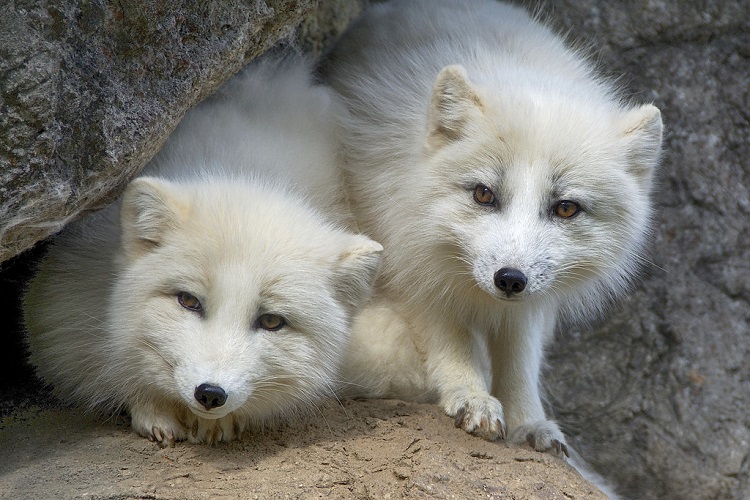
The average head-and-body length of a male Arctic fox is about 55cm but can range from 46 to 68 centimeters. Although there tends to be very little difference in size between males and females, sometimes the females are slightly smaller, averaging 52 cm long.
The height at the shoulder for both sexes is approximately 25-30 centimeters. They weigh between 3 and 20 pounds, so about the same as a typical housecat. (All fluff, no doubt.)
Their magnificent tails are about 30 centimeters long, often over half their body length.
In the wild, only 10% of offspring are expected to live past their first year, especially in times when prey is scarce. Given perfect circumstances, though, the Arctic fox has been known to live up to 11 years.
According to National Geographic, the average life span for this species of fox, however, is about 3 to 6 years.
Arctic Fox Facts
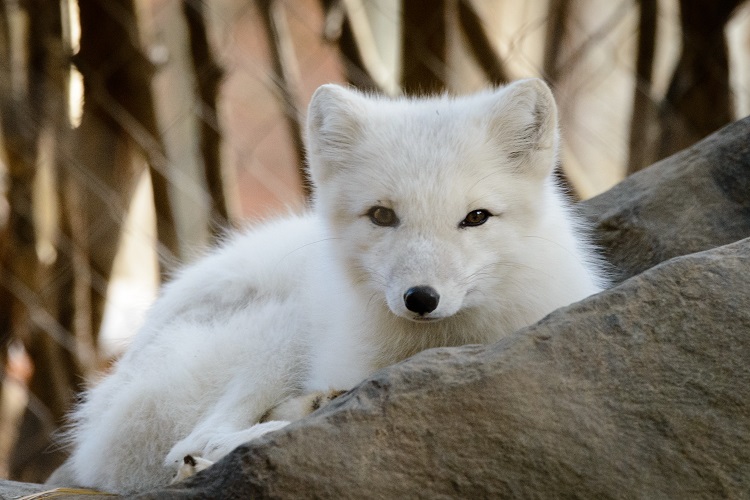
- Arctic foxes are the only land animal native to Iceland.
- Arctic foxes constantly keep their feet above the tissue freezing point (-1 degrees C) when standing on ice and snow without losing mobility or feeling pain by utilizing a countercurrent heat exchange in the blood of their legs. In layman’s terms: they increase vasodilation and blood flow to the pad surface, rather than the entire foot, conserving energy and minimizing heat loss. This also means they regulate the temperature in their paws independently from the core temperature. Wicked cool.
- The fur of the Arctic fox provides the best insulation of any mammal.
- A group of Arctic foxes is called either a skulk or a leash.
Sensory Modalities of Arctic Fox
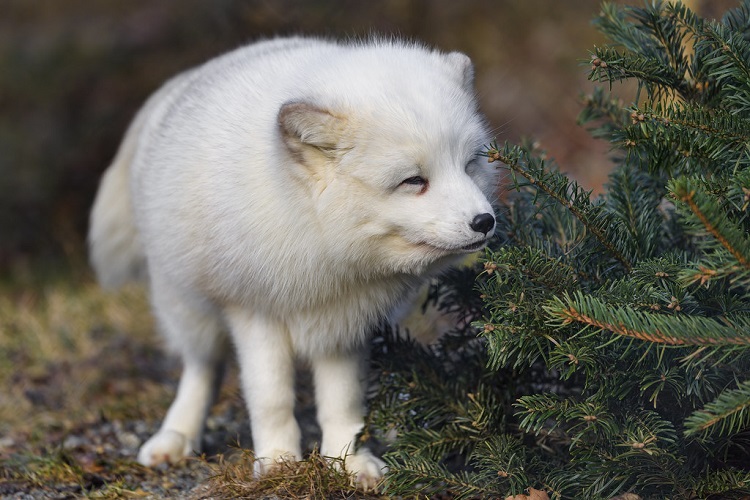
The Arctic fox relies on smell and sound to hunt its prey, especially during winter storms when visibility is low. They have extraordinary hearing and easily hunt voles or lemmings burrowing under several inches of snowpack.
Once they’ve pinpointed their prey’s location, they pounce and punch through the icy crust to catch it. (We highly recommend watching videos of this in action. It’s both impressive and hilarious to watch them aggressively dive headfirst into the icy snow.)
Their keen sense of smell can detect carcasses left by larger predators anywhere from 6 to 25 miles away.
They also use their nose to find frozen lemmings under up to 30 inches of snow or even a subnivean seal lair as deep as 60 inches down. Finally, they might use their sniffers to track down a polar bear, to follow it around in the hopes that it will make a kill.
Environmental Adaptations of Arctic Fox
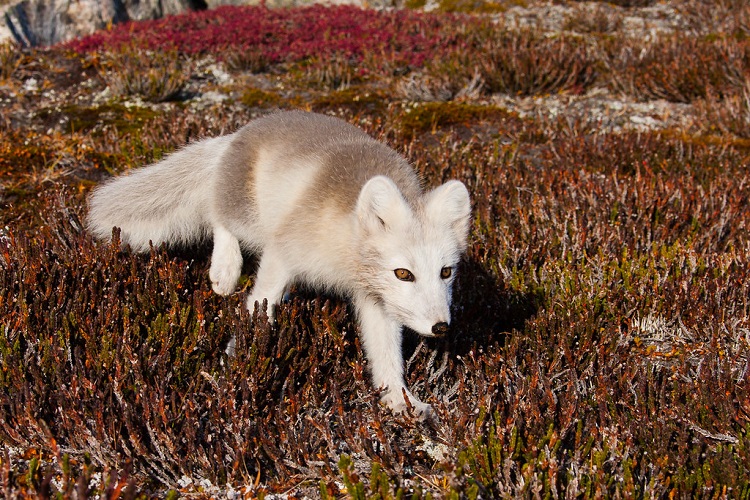
Arctic foxes are known for their beautiful white (sometimes blueish-gray) coats that maximize fluffiness to a state of perfection. Their fur offers effective concealment in winter, allowing the animal to blend in with the snow and ice that are ubiquitous in the frozen tundra.
Then, when the seasons change, their coat coloration does, too. In the summer, vulpes lagopus adopts a brown or gray summer coat, which helps provide cover among the tundra’s rocks and plants.
They also have extra fluffy fur on their tail compared to other fox breeds, which they use like a personal heated blanket to keep warm in winter. They curl up their body into a little round ball — to minimize their surface area exposure to the cold — and use that fluffy tail to cover their head against extremities.
They also have a particularly short muzzle, short rounded ears, and fur-covered soles of their feet. These features are particularly susceptible to extreme temperatures, and by keeping them short and furry, the fox has an easier time maintaining blood flow and, therefore, a consistent, comfortable temperature.
To illustrate this fact further, scientists have found that 33% of red foxes’ total body surface area dissipates heat readily. In contrast, the Arctic fox only dissipates heat from about 22% of its body surface.
Habitat of Arctic Fox
The Arctic fox resides primarily in the tundra, but they’ve also been found in Canadian boreal forests and the Kenai Peninsula in Alaska. They are found at high elevations (up to 9,800 ft above sea level), as well as down on the pack ice close to the North Pole.
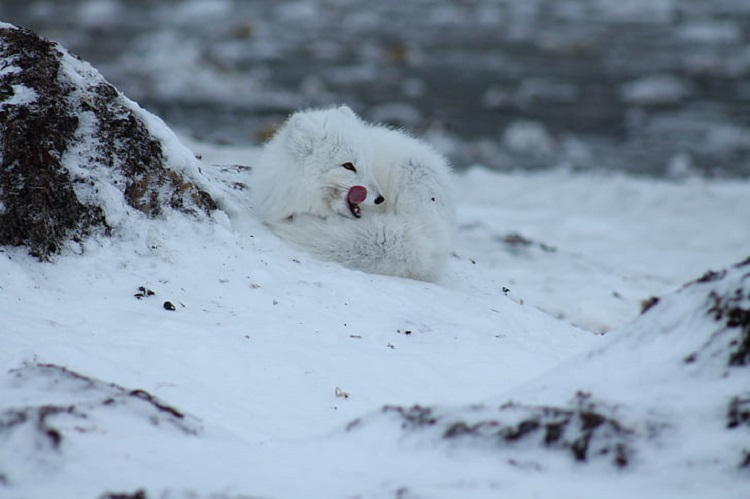
They prefer to build dens which are complex systems of tunnels built into eskers, which are long ridges of sedimentary material deposited by glaciers in eons past. Dens are well-built, so they might exist for many decades and generations of foxes.
Arctic foxes tend to select dens that are easily accessible with many entrances, which often face southward towards the sun to maximize warmth. They are also known to inhabit dens built by a red fox, as long as there aren’t any currently around.
Territories are maintained by pairs during the breeding season –and sometimes all year round — with size and shape determined by food availability.
Migrations
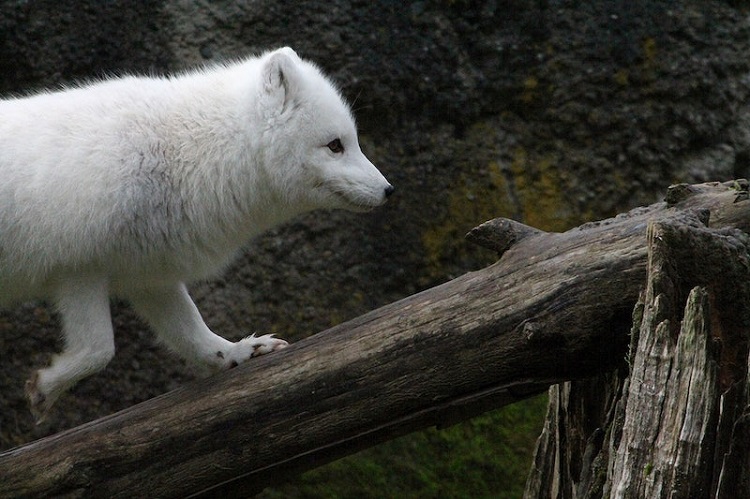
The Arctic fox will utilize “commuting trips” during the winter to find prey, which typically lasts less than 3 days and only happens a few times each month.
The closer their den is to prey, the less likely an Arctic fox will migrate. Those lucky enough to live near the coast (and therefore goose and migratory bird colonies) will very rarely migrate, but one that lives inland experiencing low-density lemming populations will go quite far.
Some foxes, like those living in Canada, undergo nomadism and sometimes migrate hundreds of miles from their territories during winter on land and sea ice.
Arctic Fox Hunting
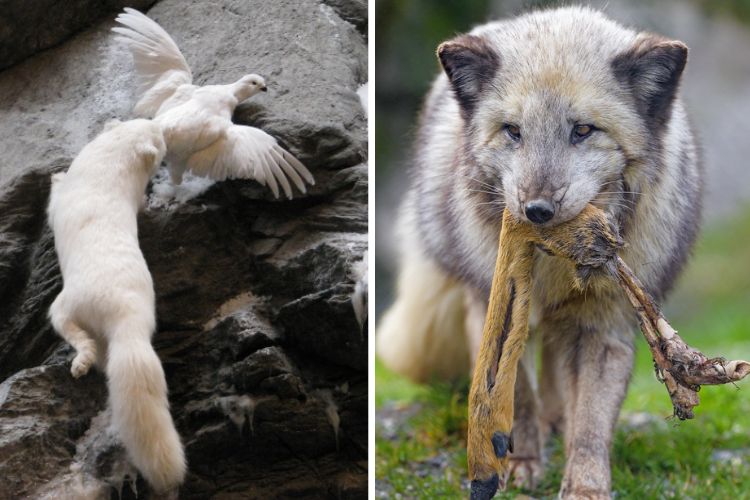
Indigenous peoples who live in the Arctic circle have long utilized and prized the Arctic fox’s exceptionally warm fur. To obtain a pelt, leg-hold traps, and shooting are the main hunting methods.
With the decline of the fur hunting industry (note we said “decline,” and not “end”), the threat of over-exploitation has been lowered for most Arctic fox populations.
However, in places where the foxes were introduced during the height of the fur trade, many face purposeful eradication to protect native species. Places like St. Paul Island and the Pribilof foster negative attitudes towards the Arctic fox, contributing to their persecution.
Arctic Fox Range
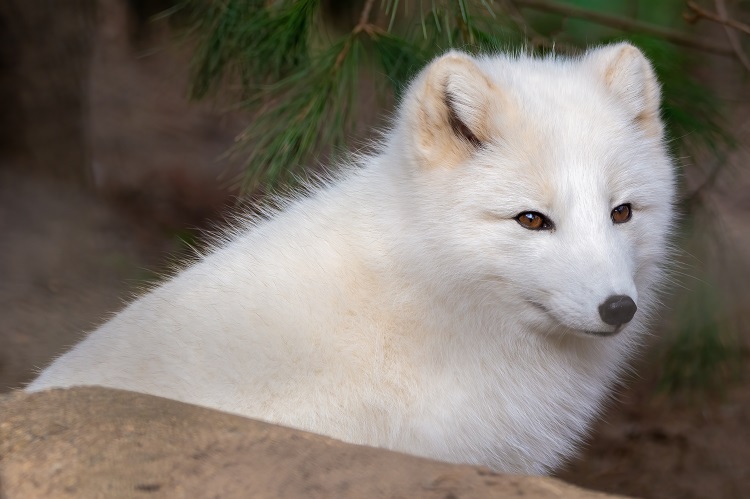
Arctic foxes prefer to live in areas around the North Pole, in the tundra habitats of northern Europe, northern Asia, and North America. Its range includes areas of Greenland, Iceland, Fennoscandia, Svalbard, islands in the Barents and Bering Seas, northern Russia, Alaska, and Canada.
Arctic foxes were introduced to the Aleutian Islands in the late 19th century, but conservation efforts are underway to eradicate that population in order to preserve the local bird population.
Fossil records show that Arctic foxes had a much greater range during the last ice age, with evidence of their existence found over much of northern Europe and Siberia.
Conservation Status of Arctic Fox
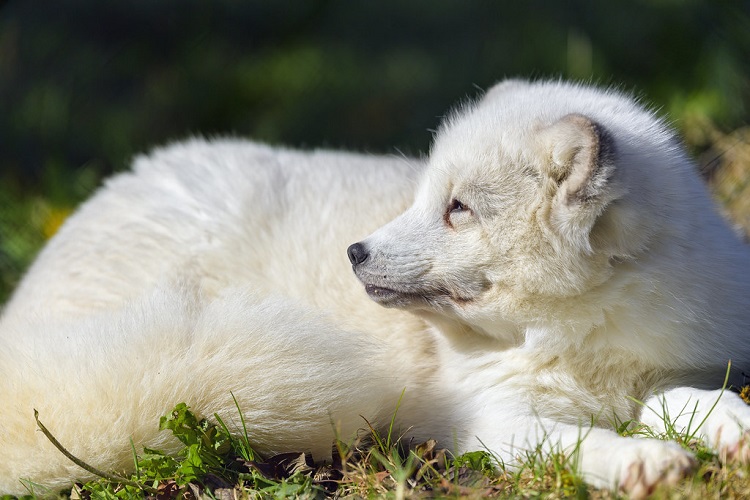
The Arctic fox has been most recently assessed for the International Union for Conservation of Nature (IUCN)‘s Red List in 2014 and has the status of “least concern.”
Although Arctic fox populations and their growth are highly reliant on lemmings populations — and therefore known to fluctuate — their population status across the world is considered stable.
The Arctic fox is under protection in certain countries, however. The species and its dens have had legal protection in Sweden since 1928, mainland Norway since 1930, and Finland since 1940.
In Europe, the Arctic fox is a priority species under the Actions of the Community relating to the Environment (ACE) and given full protection, hence less vulnerable to extinction.
Why Are [Some] Arctic Foxes Endangered
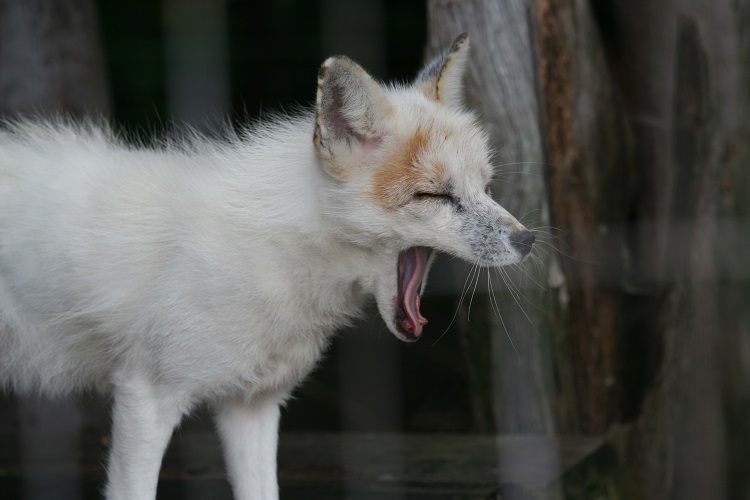
Although the IUCN doesn’t have the Arctic fox categorized as an endangered species, there are a few exceptions where populations are direly low.
In Fennoscandia (which encompasses Norway, Sweden, Finland, and the Kola Peninsula) and the islands of the Bering Sea (Mednyi Island, Russia; and the Pribilof Islands of Alaska), populations are at critically low levels and appear to be declining further.
Mostly, these areas were vastly over-hunted in the early 20th century and just haven’t been able to repopulate effectively. Experts estimate that, sadly, only 140 breeding adults exist in Fennoscandia.
In the case of Mednyi Island, however, the culprit was a type of mange caused by an ear tick introduced by dogs in the 1970s, which reduced the Arctic fox population by about 85 percent.
The Arctic fox is also losing ground to the larger red fox. Climate change is a major culprit, affecting the Arctic fox’s camouflage capabilities (less snow = more visibility).
Where there is an overlap of ranges, red foxes have started to dominate, killing their snowy kin and their kits. In addition, the grey wolf — the red fox’s primary predator — has been hunted into near extinction in much of its former range, allowing the red fox population to explode.
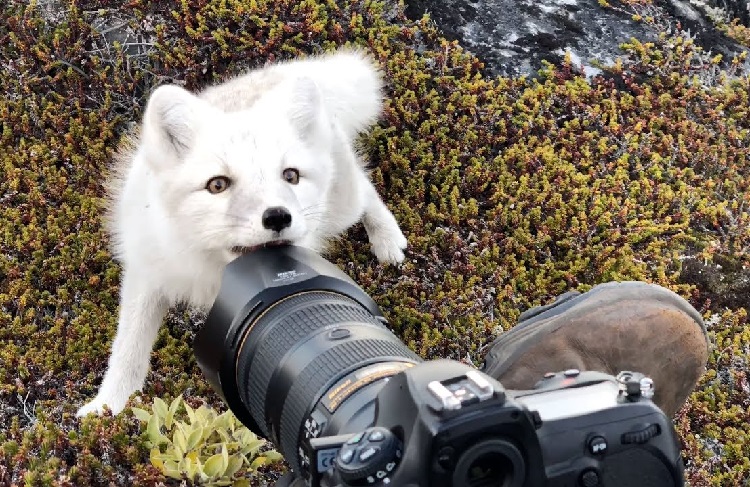
Do Polar Bears Eat Arctic Foxes?
Polar bears overwhelmingly prefer to eat ringed and bearded seals, but when times are lean, they become less choosy. If their preferred prey isn’t available, the bears will supplement their diet with “secondary animals,” like birds, fish, and, yes, foxes.
This happens more often during the winter when ice floes become too thin to support a Polar bear’s weight, and they have to hunt on land instead.
Usually, however, a polar bear and an Arctic fox can often be found coexisting, nibbling at the same carcass without too much friction.
Conclusion
If ever confronted with this adorable wild animal, it would take enormous willpower not to try and hug it. (If friend-shaped, why not friend?) However, that would be dangerous and is probably prohibited in some form or another.
That said, they can’t stop you from endlessly watching videos of an Arctic fox jumping headfirst into the ground, right?


